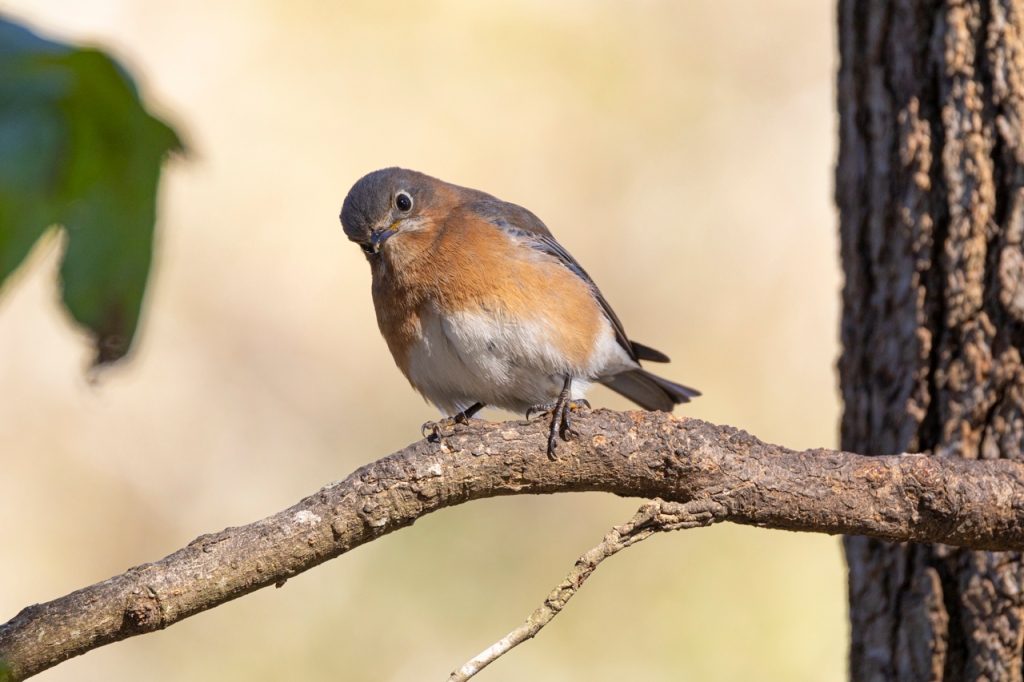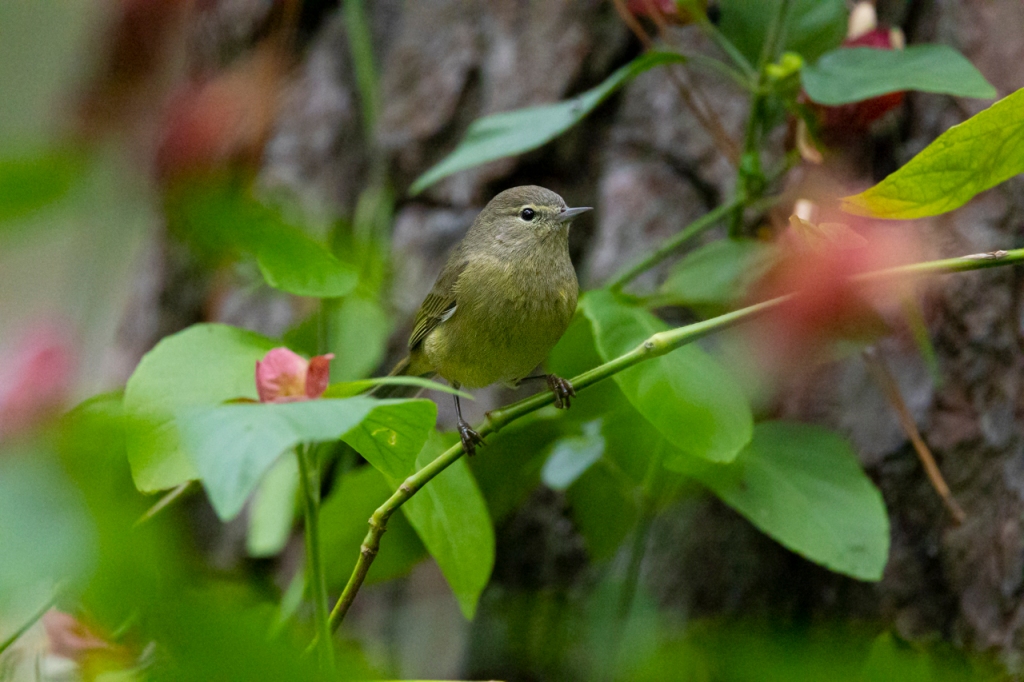
Pine Warbler photographed with the Canon R6 Mark II at ISO256000.
File Size
R6 Mark II files are 33 to 39MB in CR3. In 16-bit, these files are 4000 pixels wide by 6000 high.
R5 files are 42 to 61MB in CR3. In 16-bit, theses files are 5464 wide by 8192 high.
R3 files are 29 to 35MB in CR3. In 16-bit, these files are 4000 pixels wide by 6000 high.
So we get a smaller file than the R5 but the same size as the R3.
High ISO













Pine warbler photographed at 25,600ISO. Enlarged to 100%. Nice feather detail.
High ISO in low light is grainy. There’s no getting around it. The grain in a high ISO photo is no worse with a R6 MarkII than with an R5 or R3. To my eye, each camera is about the same. The files are usable to illustrate the bird while still retaining nice feather detail.
Low ISO and good light is always better, though.

Auto Focus
I’ve used the Canon R6 Mark II on three outings of an hour each. In each test, the camera locked on the bird quickly. Then it never lost focus once it got on the bird.

The auto focus stayed on the pine warbler’s eye even when the bird moved behind the leaf.


The camera found a small bird. The camera found the bird on perch.
In only one instance did the camera change auto focus to a distant background.
The auto focus was quick, stayed on the bird’s eye, and adjusted as the bird moved.
I haven’t had a chance to use the Canon R6 Mark II on flying bird, yet. Stayed tuned for that test.
Conclusion
So far, I’m impressed. The Canon R6 Mark II handles high ISO well and the auto focus is outstanding. I thought I’d find something lacking but this camera is living up to my expectations.
Thanks for reading. Let me know if you have any questions or comments.
























